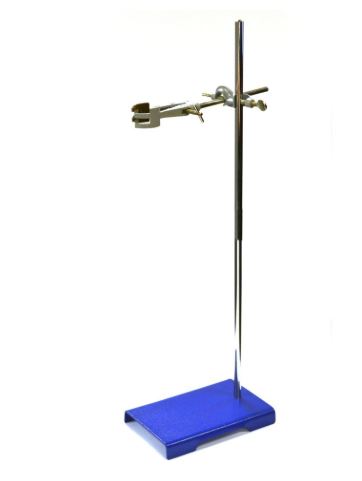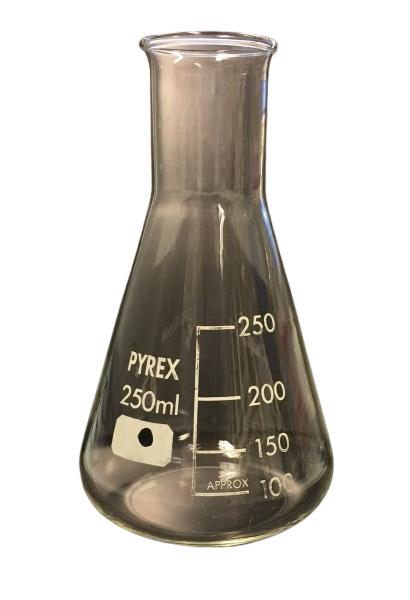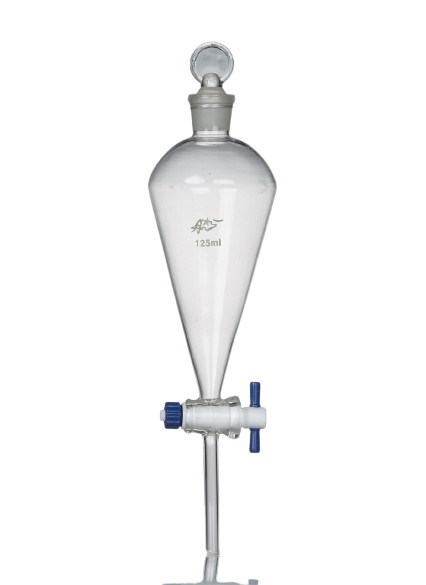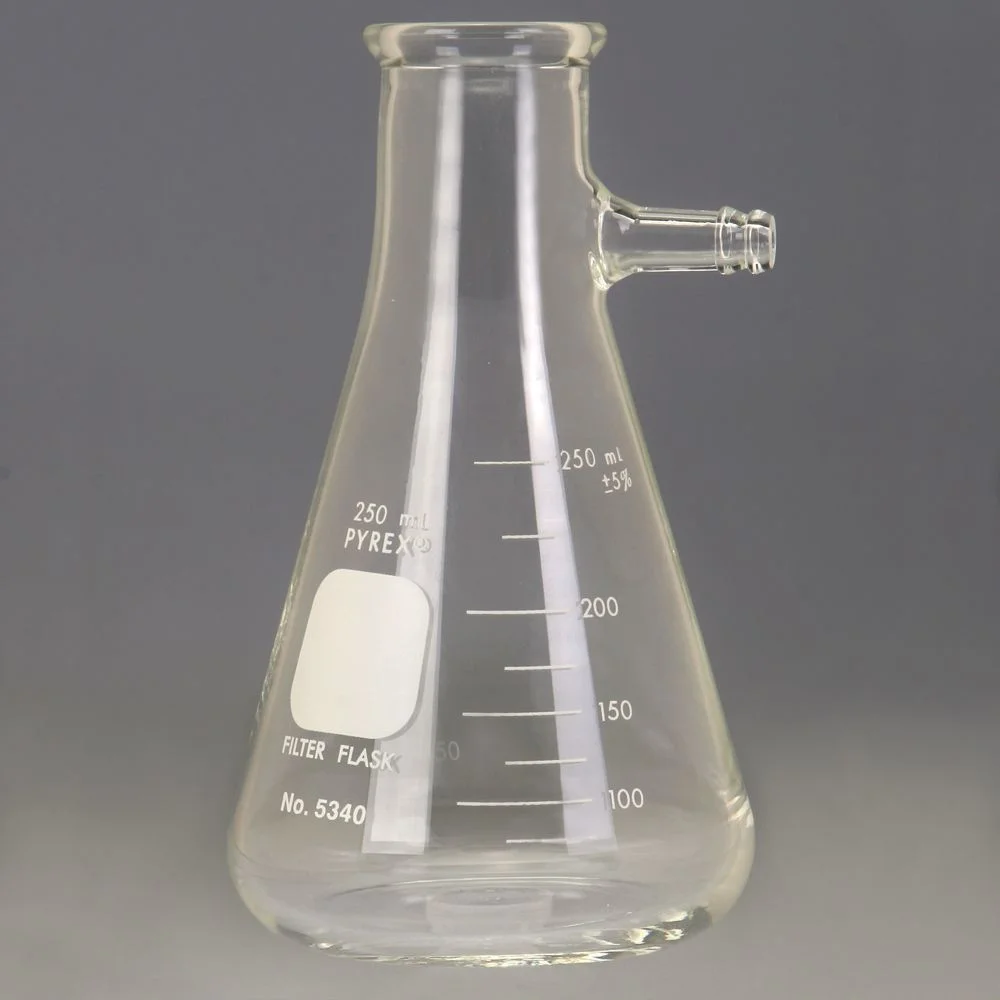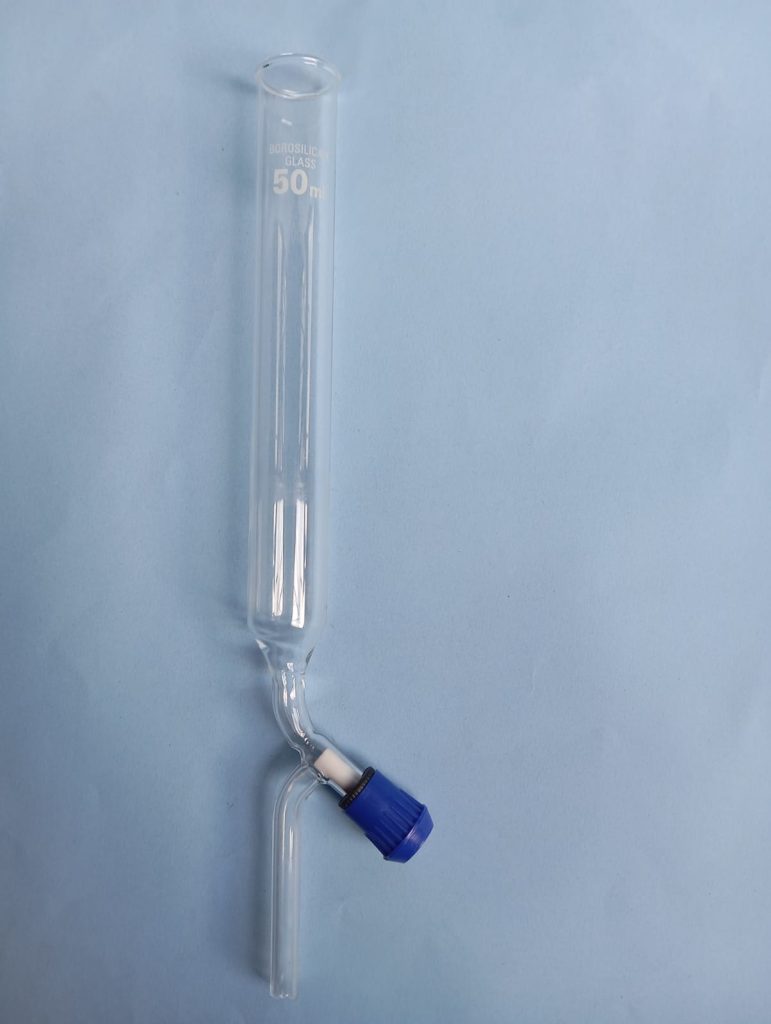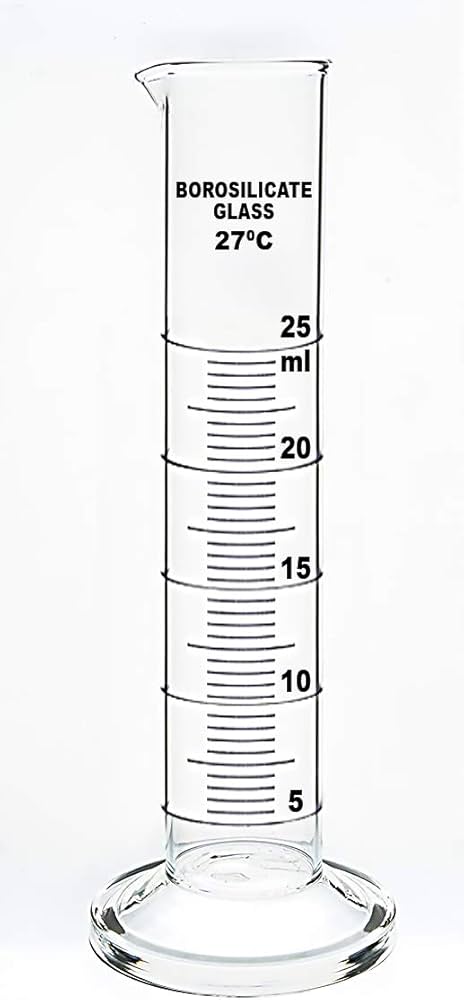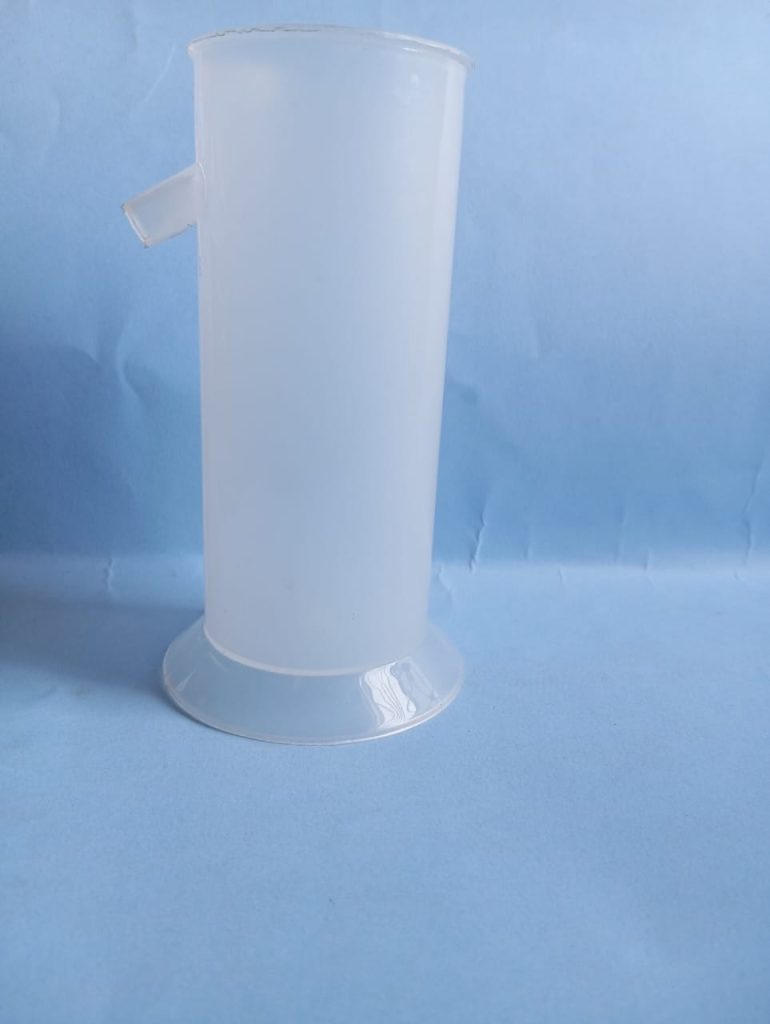Glass 125ml Separating Funnel
Description:
-
Shape: The separating funnel is typically conical or pear-shaped with a narrow neck and a wide, rounded base. This shape helps in better separation and allows for easier drainage of the denser liquid.
-
Material: Made of borosilicate glass which is resistant to chemical reactions and can withstand a range of temperatures.
-
Size: The 125 mL capacity indicates the volume of liquid the funnel can hold. This is a medium-sized funnel, useful for small to medium-scale laboratory separations.
-
Stopcock: The funnel features a stopcock (a valve or tap) at the bottom of the neck. This is used to control the flow of liquid, allowing one phase (usually the denser liquid) to be drained off, while leaving the other phase behind. The stopcock can be made of glass or plastic.
-
Glass Plug: It typically has a glass stopper or plug to seal the funnel when shaking it. This ensures that the liquid inside doesn’t spill or evaporate during the separation process.
Function:
-
Separation of Immiscible Liquids: The main purpose of a separating funnel is to separate immiscible liquids (liquids that do not mix), such as oil and water. When the two liquids are poured into the funnel and allowed to stand, they form distinct layers. The denser liquid (usually water) will settle at the bottom, while the less dense liquid (like oil) will float on top.
-
Liquid-Liquid Extraction: The funnel is often used in liquid-liquid extraction processes to separate components of a mixture based on their solubility in different solvents. For example, separating an organic solvent from an aqueous phase.
-
Decanting: The stopcock allows for controlled decanting, draining off the lower phase without disturbing the upper layer.
Common Uses:
-
Extraction Processes: Commonly used in organic chemistry to extract specific compounds from a mixture, such as when separating an organic solvent from water.
-
Separation of Immiscible Liquids: Used in chemical analysis and synthesis to separate liquids that do not mix, such as separating water and oil, or ethanol from water.
-
Purification: Used in the process of purification to isolate certain compounds by separating them from undesired substances.


